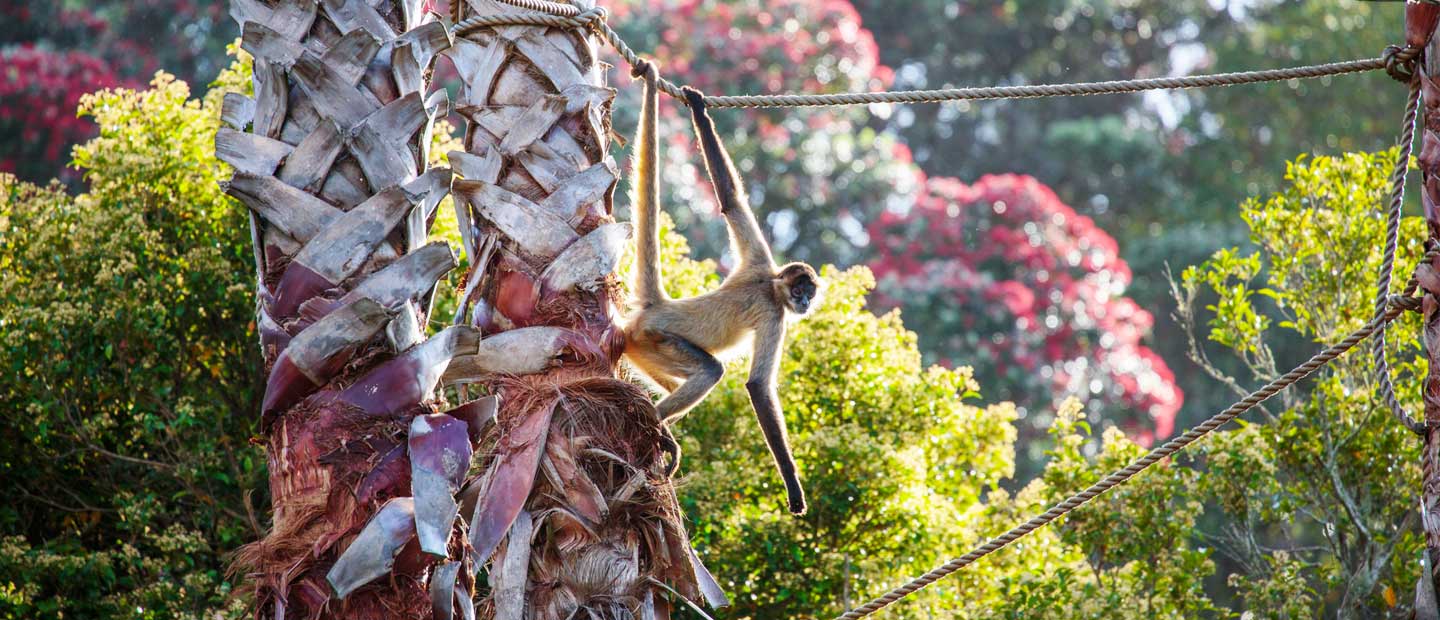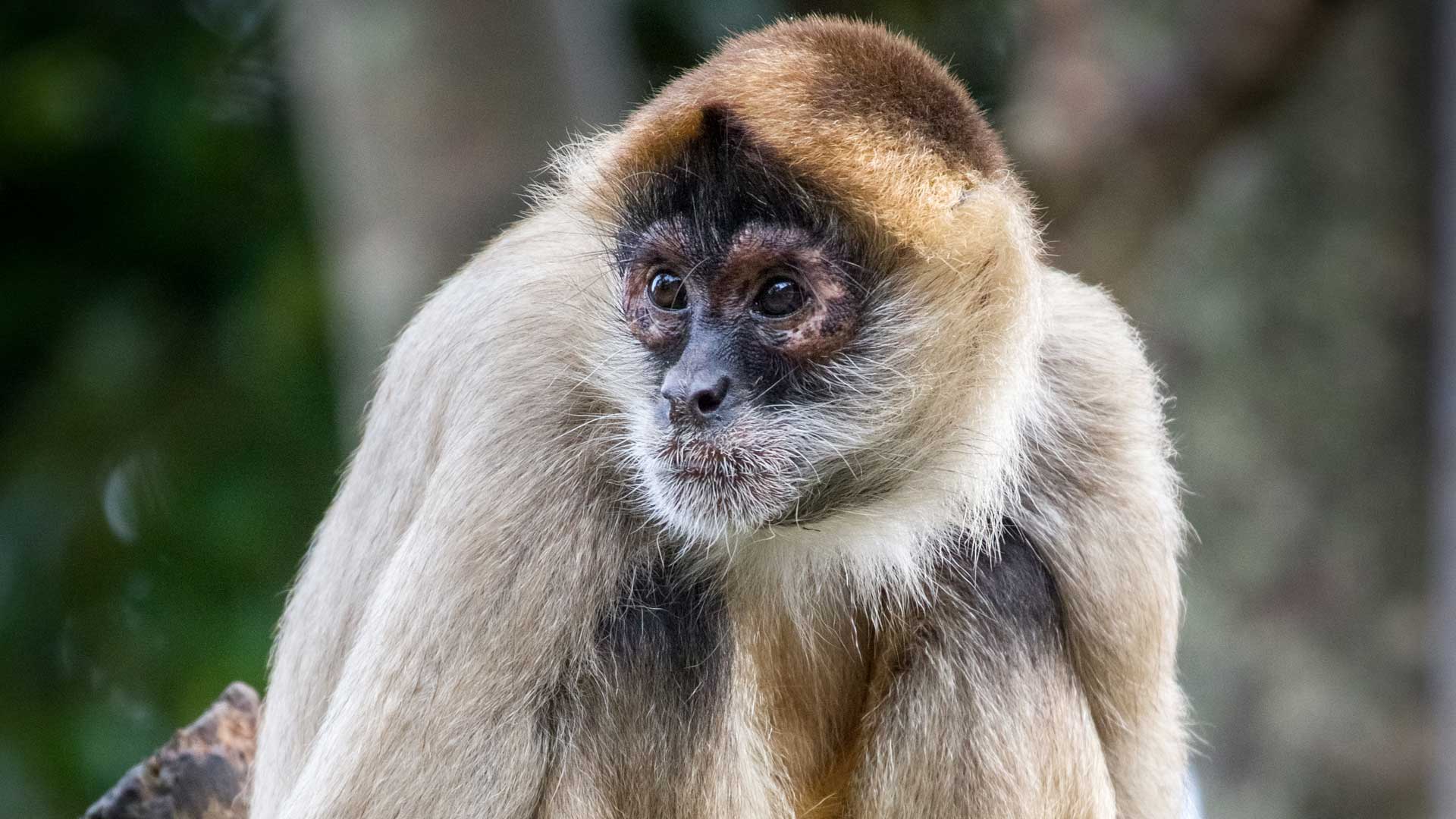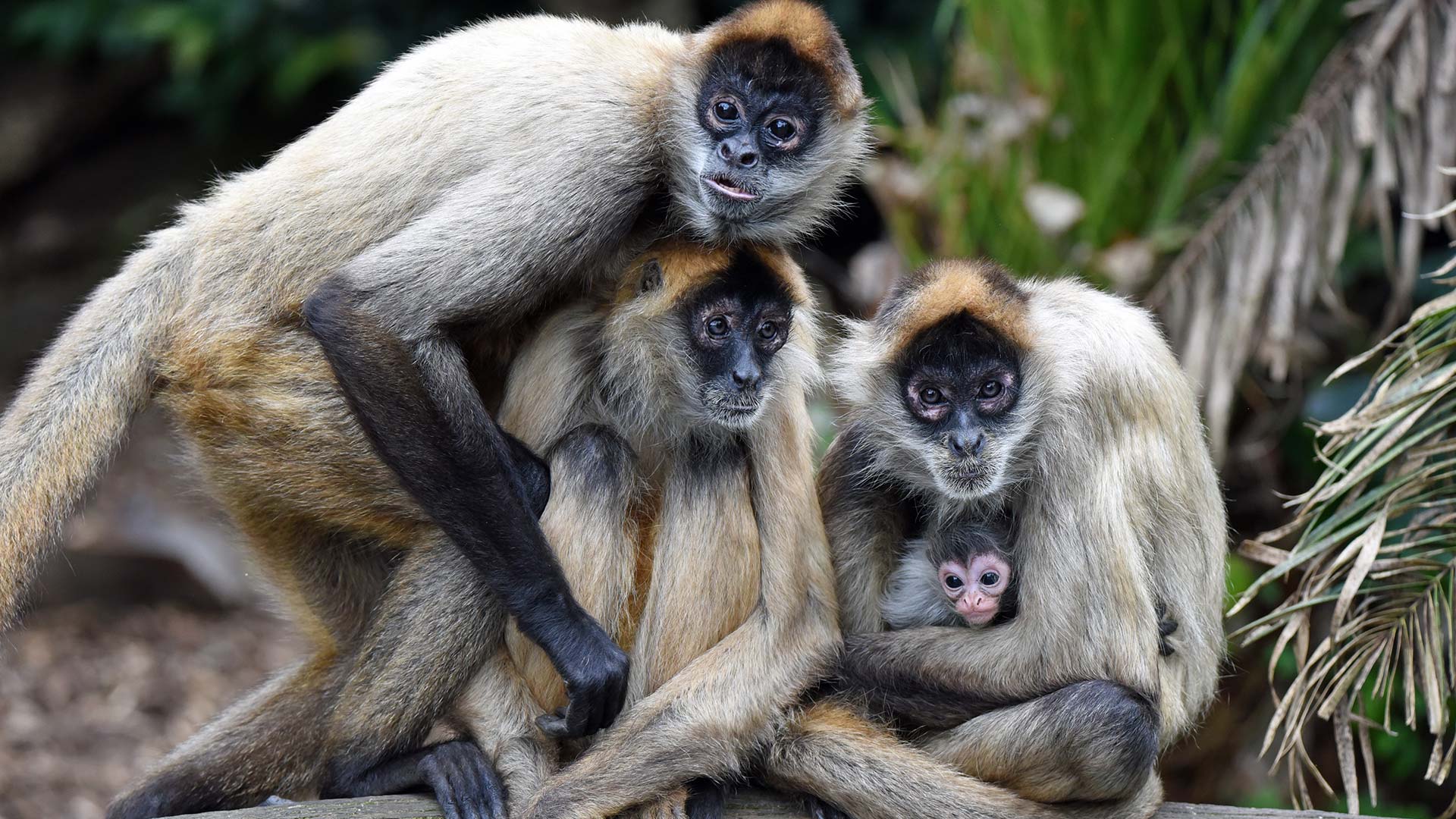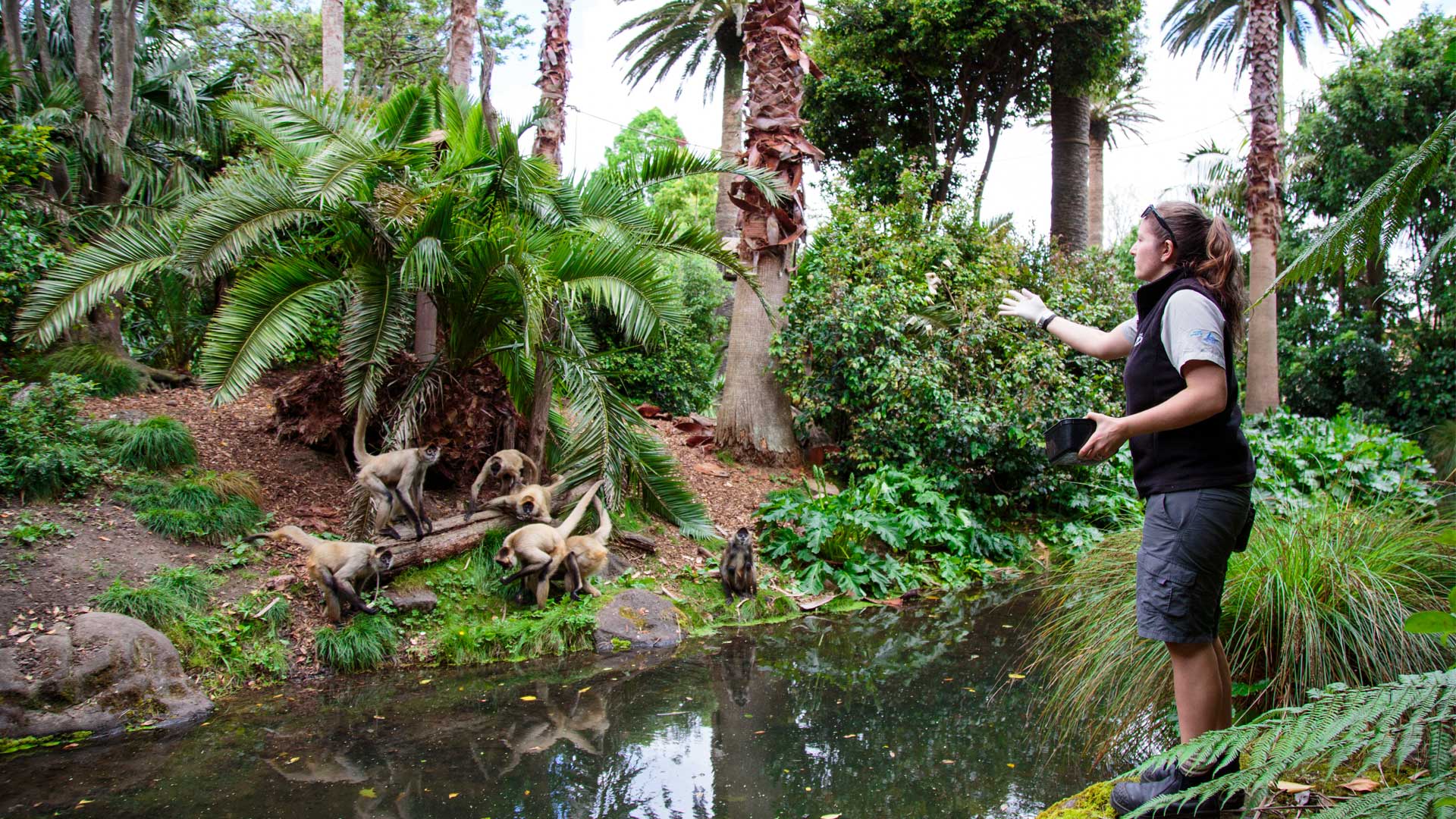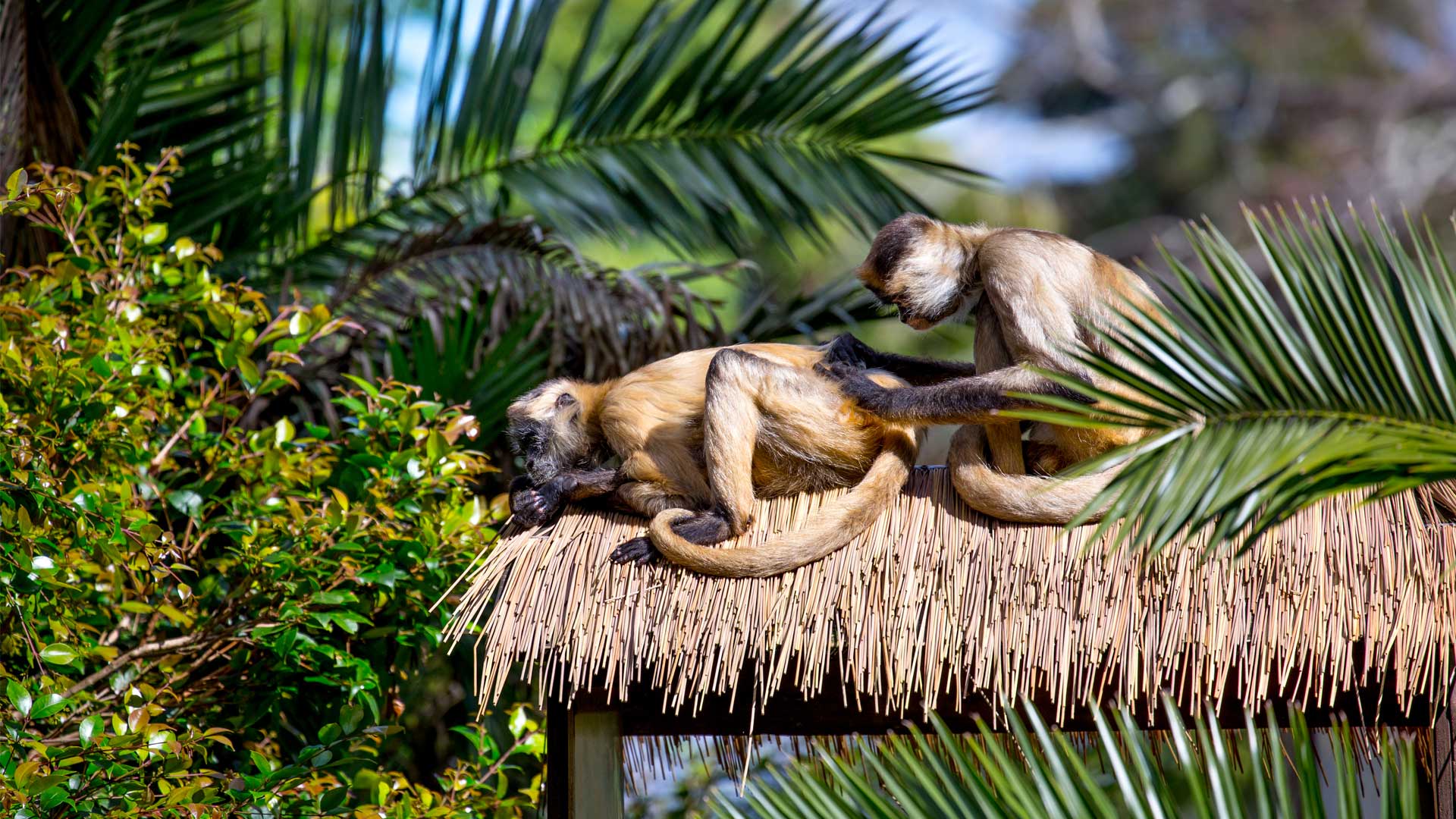At the Zoo
The resident troop at the Zoo consists of one male and six adult females. In the wild troops can get quite large in size, sometimes up to 40 individuals. The troop works together to defend their territory and protect the group from neighbouring groups or predators. Usually the troop then splits into smaller subgroups when foraging. This type of societal structure is known as a fission–fusion society.
Around 80% of a wild spider monkeys diet is fruit. But here at the Zoo fruit makes up only 8% of their diet. This is because the types of fruit found in New Zealand are for humans to eat which have different sugar compositions to the fruits found in the spider monkeys wild diet. To avoid excess sugar in their diet our troop gets a lot of vegetables. Vegetables and leafy greens make up about 85% of their diet with the remainder made up of boiled eggs and specially formulated protein-rich biscuits.
Keeping an eye on health
As with all animals at the Zoo we have to make sure that everyone is healthy. Our keepers are on the lookout for the smallest changes in behaviour and monitor how much everyone is eating. If any changes are noticed it could indicate an injury, a change in troop hierarchy or even a pregnancy in the group.
With a territorial animal zoo keepers usually have to earn the ‘trust’ of the animal to be able to get close to it. When Toque, the eldest male, arrived from overseas the keepers had to create a training programme that would reduce his aggression to the keepers and allow them to train him to come to them upon request. Improving this type of behaviour is vital for check-ups by the keepers and the vets.
Spider monkeys have been crowned the third smartest non-human primate after orangutans and chimpanzees! To keep their inquisitive minds busy our keepers and volunteers prepare behavioural enrichment every day. Fruit and vegetables get pushed into hidey-holes and cracks throughout their habitat.
Like a giant game of hide-and-seek the spider monkeys then locate the snacks and have to fish them out of crevices using their long fingers. Other manipulation-based enrichment includes hiding food in objects like hose-pipes and boomer balls requiring problem solving and coordination to retrieve the goods. During warmer seasons the volunteers freeze fruit tea with fruit pieces in requiring patience while the ice block slowly defrosts and releases the fruit.
Up high in the trees
Big tall palm trees and arboreal rope systems replicate the heights of the upper canopy in the virgin rainforests of South America and give our troop a place to swing from the treetops like they would in the wild!
In the wild predators of spider monkeys like the anaconda, caiman or jaguar will hunt from the water. This instills a natural fear of water that allows us to use a moat as a containment barrier rather than a more obstructive fence. Sometimes you might spot members of our troop gingerly leaning across the water to reach a piece of fruit that fell in the water. But you’ll notice that they will always hold onto something with a hand or their tail to stop them from falling in!


